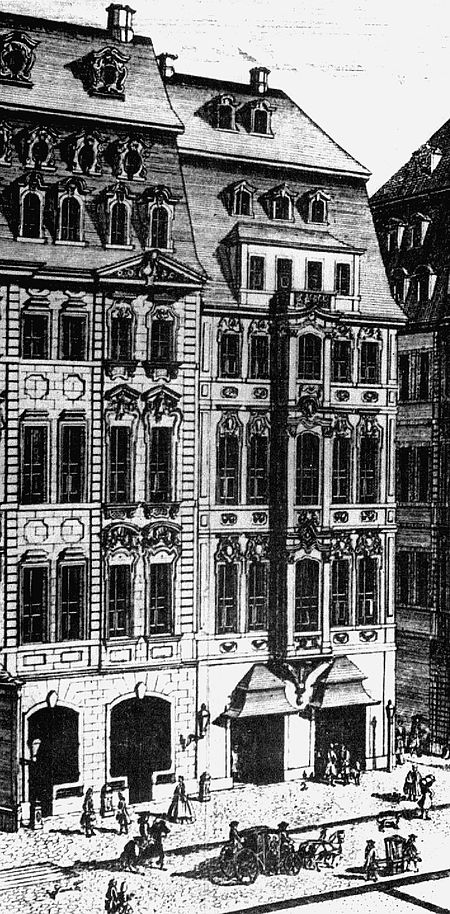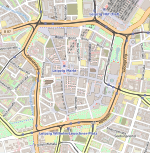Café Zimmermann

The Café Zimmermann, or Zimmermannsches Kaffeehaus was the coffeehouse of Gottfried Zimmermann in Leipzig which formed the backdrop to the first performances of many of Bach's secular cantatas, e.g. the Coffee Cantata (Schweigt stille, plaudert nicht), and instrumental works. In 1723, the year Bach moved to Leipzig, it was the largest and best-appointed Kaffeehaus of Leipzig and a centre for the middle classes and gentlemen. While women were forbidden from frequenting coffeehouses, they could attend public concerts at Zimmermann's. The coffeehouse was located at 14 Katharinenstrasse, then the most elegant street of Leipzig, connecting the Brühl to the market place. The name of the street had been taken from the old St. Catherine's Chapel which had been demolished in 1544. In Telemann's and Bach's day, only the name of the street remained. During the summer months, Zimmermann also ran an outdoor coffee garden in the Grimmaischer Steinweg outside the city walls, near the East Gate.The four-and-a-half-story Baroque building was constructed by Doering around 1715. It consisted of two adjoining rooms, one approximately 8 by 10 metres (26 ft × 33 ft), the other approximately 5.5 by 10 metres (18 ft × 33 ft). It was destroyed during an Allied air raid on Leipzig in December 1943.Zimmermann also ran a coffee garden as a summer venue.
Excerpt from the Wikipedia article Café Zimmermann (License: CC BY-SA 3.0, Authors, Images).Café Zimmermann
Katharinenstraße, Leipzig Leipzig-center (Mitte)
Geographical coordinates (GPS) Address Website Nearby Places Show on map
Geographical coordinates (GPS)
| Latitude | Longitude |
|---|---|
| N 51.34176 ° | E 12.37509 ° |
Address
Katharinum
Katharinenstraße 6
04109 Leipzig, Leipzig-center (Mitte)
Saxony, Germany
Open on Google Maps










